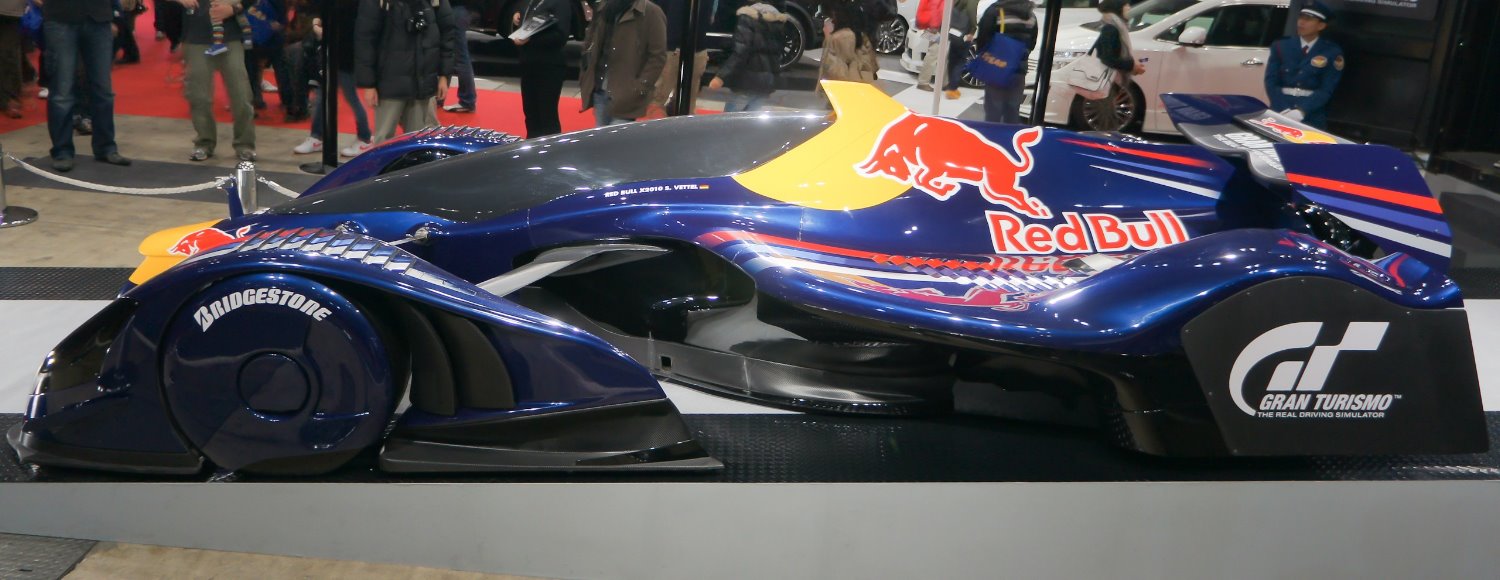Open-Wheel racing is in need of a major rethink (Update)
08/24/15
 |
| The next IndyCar will take many design cues from the Red Bull concept car done by Adrian Newey and Kazunori Yamauchi |
With the news of the death of IndyCar driver Justin Wilson, who succumbed to his injuries received from flying debris after Sage Karam's crash during a 500-mile IndyCar race at Pocono on Sunday, once again the sport is reeling. There are no words to describe the shock and sense of loss to Justin's family at this time, but we can only hope they can somehow find some comfort and solace in this darkest hour.
I wrote the rest of this column Sunday night – before I received the news of Justin's passing – but it's no secret that I believe that the open-wheel racing machines that we have followed for decades need a major rethink. Exposed drivers in cars that are going upwards of 220 mph is a racing car configuration whose time has surely passed.
As if any of us needs to be reminded, racing is an inherently dangerous endeavor. And open-wheel racing is the most dangerous form of automobile racing there is. Ages ago, racing drivers perched in their cars – their heads and bodies exposed – and it was just the accepted way, because back then the prevailing attitude was that it was better to be thrown from your car than be trapped in it. Look up pictures of the great Alberto Ascari in 1951 to understand what that notion really meant, if you need to be reminded. As we progressed from the traditional, front-engined, "upright" era to the mid-engined "lay down" era, the measure of driver safety improved, but make no mistake, one of racing's most notoriously dangerous eras – roughly from the late-50s to the late-70s – took its toll on drivers at a prodigious rate.
The reality is that the sport has been basically racing the same open-top, open-wheel, mid-engine configuration machines since 1959, and I think it's about time to rethink what's going on in what we refer to as "formula" cars once and for all. Back in 2010, the great racing car designer Adrian Newey, head engineer of Red Bull Racing at the time, and Kazunori Yamauchi, envisioned the open-wheel racing machine of the future for the Gran Turismo 6 video racing game. Besides the fact that the car was theoretically supposed to have 1,500HP and have a top speed of almost 300 mph, the most striking aspect of the Red Bull X2010 (originally called the Red Bull X1) was that it had a closed cockpit with a canopy over the driver. Since that visionary project, several different racing entities have created futuristic F1 machines of their own, most all of them having canopies over the driver as well.
The fundamental problem with racing is that when it comes to visionary thinking in the pursuit of going faster, the ideas come hard and fast. But when it comes to improving the safety aspects of racing, the ideas always come in reactionary fashion, after someone is seriously hurt, or worse, killed. It took the loss of NASCAR's reigning superstar – Dale Earnhardt – at Daytona back in 2001, before the sanctioning organization wholeheartedly embraced a complete revamp of their safety systems. This isn't a knock on NASCAR at all, it's the nature of racing to react after these kinds of sobering incidents. Remember, it's the very nature of the sport that it's easier to be proactive in the pursuit of speed than it is with safety, and that has always been the case. Go back even further, and remember how the Indianapolis Motor Speedway mandated fuel cells – the idea came from military helicopters – after the horrific deaths of drivers Eddie Sachs and Dave MacDonald in the 1964 Indy 500. Changes and progress to the safety aspects of racing have come over the years, but unfortunately too many of those changes have come from bitter and sobering accidents.
I would love to see NASCAR be proactive and make some fundamental changes to the way it goes about racing on its superspeedways – other than the use of restrictor-plates – before a driver gets killed or a car gets launched into the stands. Because as I've said many times before, I don't think auto racing in this country could survive such an incident without major repercussions that would severely – and negatively – impact the sport for years.
And it's time for the powers that be in major league open-wheel racing – and that means IndyCar and F1 – to be proactive and design all-new cars that have protective driver canopies as part of the overall package.
And that's the High-Octane Truth for this week. Peter DeLorenzo/Autoextremist
